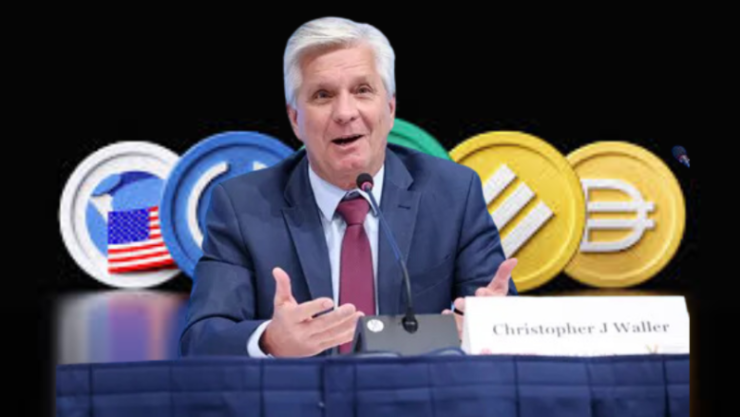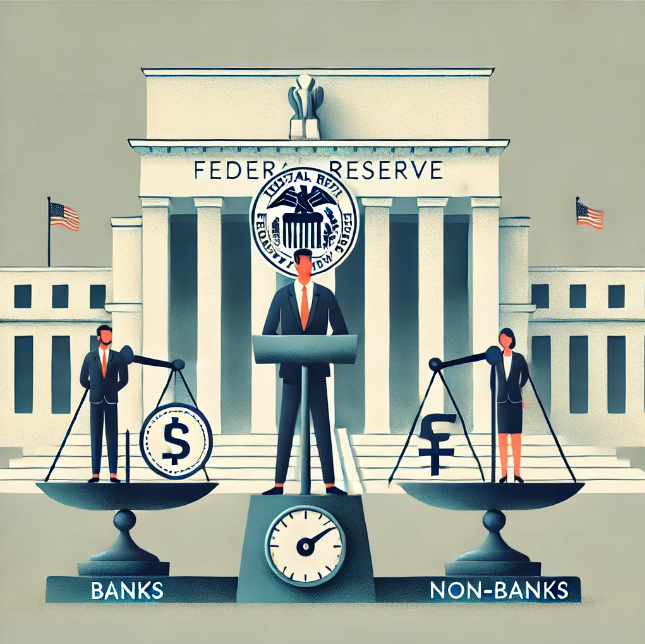Federal Reserve Governor Christopher Waller has reiterated the need for a clear regulatory framework that would allow banks and non-banks to issue stablecoins, emphasizing their potential to expand the reach of the U.S. dollar and enhance the payments system. Speaking at a conference in San Francisco on February 12, Waller described stablecoins as an important innovation that could improve retail and cross-border payments, but stressed that proper regulatory oversight is necessary.
A Call for Stablecoin Regulation
Waller acknowledged that the stablecoin market has matured significantly and would benefit from a U.S. regulatory framework that directly addresses its risks while ensuring financial stability and security. He emphasized that this framework should allow both banks and non-bank entities to issue stablecoins, fostering a competitive payments landscape that encourages innovation.
“This framework should allow both non-banks and banks to issue regulated stablecoins and should consider the effects of regulation on the payments landscape, including competing payment instruments.”
The Role of the Private Sector in Stablecoin Adoption
Waller expressed confidence in the private sector’s ability to build stablecoin solutions for businesses and consumers, urging regulators to provide a fair and transparent set of rules for market participants.
“I believe in the power of the private sector to develop solutions that benefit businesses and consumers, with the job of the public sector to create a fair set of rules for market participants to operate within.”
Stablecoins are already being used as a store of value within the crypto ecosystem, offering access to U.S. dollars in high-inflation countries, and facilitating cross-border payments and retail transactions. However, Waller noted that current retail adoption remains limited, with regulatory uncertainty hindering broader usage.
Challenges and Risks in the Stablecoin Market
Despite their potential, Waller pointed to several challenges in stablecoin adoption and regulation, including:
- Regulatory uncertainty in the U.S., leading to fragmented state and federal oversight.
- Lack of international regulatory coordination, creating inconsistencies across jurisdictions.
- Risk of stablecoin “depegs”, where a stablecoin loses its peg to the U.S. dollar, potentially triggering market instability.
- Need for balanced regulations that promote innovation while maintaining financial system stability.
These challenges highlight the need for a well-structured regulatory framework that ensures stablecoins operate safely without stifling technological progress.
Stablecoins as a Competitive Force in Payments

Waller has previously expressed support for stablecoins as a form of “synthetic dollars”, comparing them to commercial bank money. Speaking at the Atlantic Council on February 6, he described stablecoins as a way to open competition in payments, broaden financial access, and drive down transaction costs.
“If they can do that in a way that opens competition, broadens the reach of the payment system, drives down costs, makes things faster and cheaper, I’m all for it.”
His remarks signal the Fed’s growing openness to stablecoin innovation, provided it operates within a clearly defined regulatory framework.
What This Means for Crypto and the Financial System
A regulated stablecoin market could bring multiple benefits, including:
- Greater integration of crypto with traditional banking through regulated bank-issued stablecoins.
- More efficient cross-border payments, reducing reliance on outdated banking infrastructure.
- Increased consumer confidence, with protections against fraud and systemic risks.
- A more competitive payments ecosystem, challenging traditional financial intermediaries.
However, Waller stressed that the success or failure of stablecoins should be determined by their real-world benefits to consumers and the broader economy. He emphasized that the private sector must continue developing innovative solutions, while regulators must ensure legal clarity and global regulatory coordination.
With stablecoins playing an increasingly prominent role in digital finance, Waller’s push for regulatory clarity could set the stage for greater institutional adoption and mainstream financial integration of digital assets.





